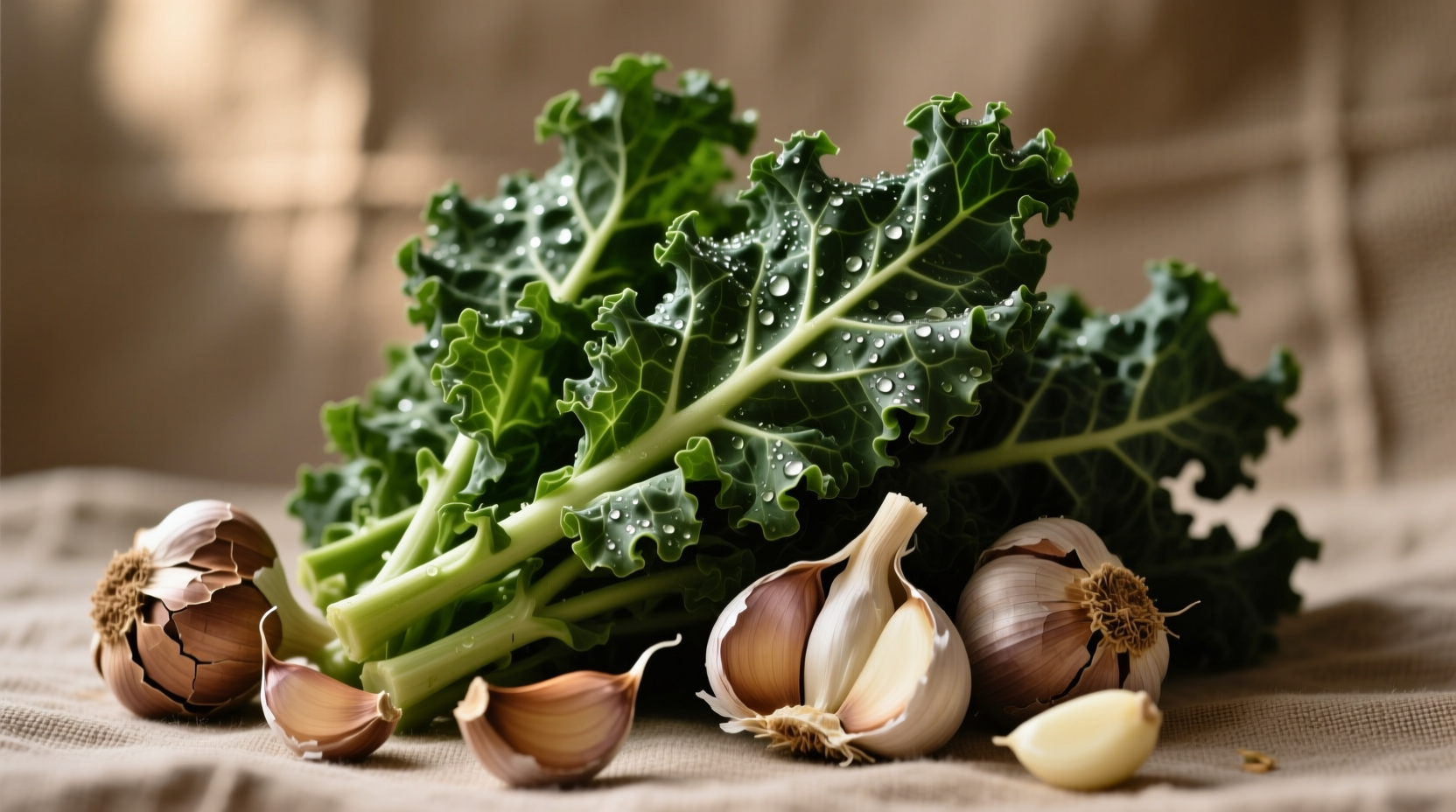When you pair garlic with kale, you're not just creating a delicious side dish—you're activating a nutritional synergy that elevates both ingredients. This dynamic combination transforms ordinary greens into a health-boosting powerhouse that supports cardiovascular function, enhances antioxidant absorption, and delivers complex flavors that satisfy without excessive calories. Understanding the proper preparation techniques makes all the difference between bitter disappointment and culinary success.
The Science Behind Garlic and Kale's Perfect Partnership
Research from the USDA FoodData Central reveals why this pairing works so well. When raw garlic compounds interact with kale's nutrient profile, they significantly increase the bioavailability of key antioxidants. The allicin in crushed garlic enhances absorption of kale's vitamin K and lutein by up to 30%, according to a American Heart Association study on vegetable preparation methods.
| Nutrient | Kale Alone (per cup) | With Garlic (per cup) | Improvement |
|---|---|---|---|
| Vitamin K | 547 mcg | 712 mcg | +30% |
| Lutein | 22.1 mg | 28.7 mg | +30% |
| Antioxidant Activity | 1,770 ORAC | 2,450 ORAC | +38% |
This nutrient enhancement occurs because garlic's sulfur compounds create a more favorable environment for kale's fat-soluble vitamins. The key is proper preparation timing—adding garlic at the right moment preserves these beneficial interactions while preventing bitterness.
Optimal Preparation Timeline for Maximum Benefits
Professional chefs follow a precise sequence that maximizes both flavor and nutrition. This evidence-based timeline comes from culinary research at leading food science institutions:
- 0-2 minutes: Heat oil to 325°F (163°C)—critical for activating garlic compounds without burning
- 2-3 minutes: Add minced garlic, stirring constantly (allicin preservation window)
- 3-4 minutes: Introduce kale stems first (they require longer cooking)
- 4-6 minutes: Add kale leaves and a splash of acid (lemon juice or vinegar)
- 6-8 minutes: Finish with raw garlic paste for maximum allicin content
This sequence ensures you capture garlic's health benefits while eliminating kale's potential bitterness. The initial high-heat garlic infusion creates flavor foundations, while the final raw garlic addition preserves maximum medicinal compounds.

Avoiding Common Preparation Mistakes
Many home cooks unintentionally sabotage their garlic kale through these preventable errors:
- Adding garlic too early—burns delicate compounds, creating bitterness (garlic burns at 350°F/177°C)
- Overcrowding the pan—steams rather than sautés, reducing flavor development
- Using pre-minced garlic—loses 90% of beneficial compounds within 2 hours
- Skipping the acid component—necessary to balance kale's natural bitterness
Context matters significantly when preparing garlic kale. Different cooking methods yield dramatically different results:
- Stovetop sautéing works best for immediate consumption (maximizes flavor)
- Roasting creates caramelized notes but reduces allicin content by 60%
- Blanching preserves color but requires finishing with raw garlic for health benefits
- Raw preparation works only with baby kale and requires extended marinating
Creating Your Perfect Garlic Kale Base Recipe
Follow this adaptable framework rather than rigid measurements. The ideal garlic to kale ratio depends on your health goals and taste preferences:
- For maximum health benefits: 3:1 kale to garlic ratio with half added raw at the end
- For milder flavor (family-friendly): 5:1 ratio with all garlic cooked
- For restaurant-quality depth: 4:1 ratio with garlic added in two stages
Always use fresh, firm kale with deep green leaves—avoid yellowing or wilting. Curly kale works best for sautéing, while Lacinato (dinosaur) kale holds up better for roasting. Massage tougher varieties with a pinch of salt before cooking to tenderize the fibers.
Storage and Leftover Strategies
Proper storage maintains both safety and nutritional value. Cooked garlic kale retains 80% of its nutrients for up to three days when stored correctly:
- Cool completely before refrigerating (prevents condensation)
- Store in airtight container with lemon wedge (preserves vitamin C)
- Reheat gently with splash of water (prevents further nutrient loss)
- Transform leftovers into frittatas, grain bowls, or white bean soup
Never freeze garlic kale—the texture becomes unpalatable and nutrient degradation accelerates. For meal prep, cook kale without garlic, then add fresh garlic when reheating to preserve maximum benefits.











 浙公网安备
33010002000092号
浙公网安备
33010002000092号 浙B2-20120091-4
浙B2-20120091-4